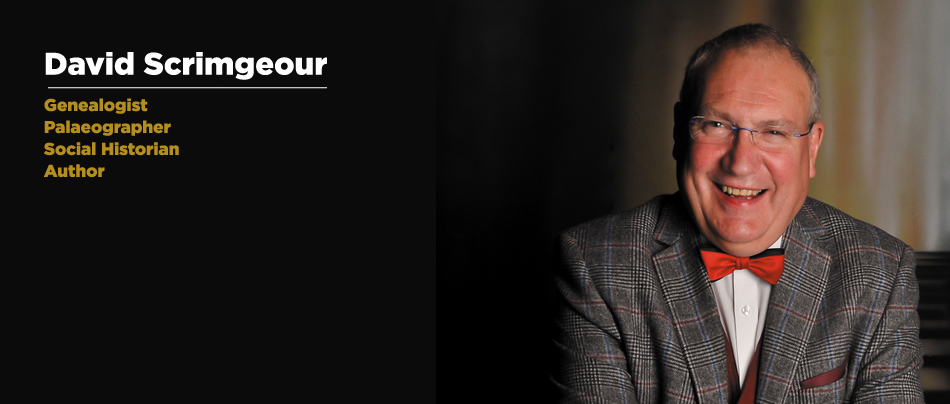David Scrimgeour has enjoyed a successful first year as a
speaker delivering his inaugural illustrated presentation “Early Asylum Life” to
family and local history societies, Probus clubs and other interested
organisations across Yorkshire and beyond. With his entertaining and educational style of delivery, feedback
confirms that David’s talks have been much enjoyed with his latest in
September, 2017 being complimented by Marion Moverley of Upper Dales Family History
Group as “an excellent and very detailed presentation which raised a lot of
interest” and alerted the audience “to sources that some of us had not thought
of before”.
David has spent considerable
time researching and developing a new presentation “Evolution of Asylum Patient
Photography” to place before interested
groups in 2018 and beyond. Audiences who haven’t yet heard “Early Asylum Life”
are recommended to first book that presentation as an introduction to the
subject.
Early
Asylum Life:
The audience travels back in time,
becoming a “fly on the wall” in one of the 19th century’s earliest
County Asylums in England, the West Riding Pauper Lunatic Asylum, Yorkshire
which opened in 1818. The voices of the insane poor are heard through the words
of their physicians, relatives, and very specially, the patients themselves,
using material from the UNESCO award winning collection of original case notes
and other asylum records held by West Yorkshire Archive Service. Listeners
learn in intimate detail about why they were committed, how they were treated
and what became of them and their families.
Evolution of Asylum Patient Photography:
The archives
of the West Riding Pauper Lunatic Asylum in Wakefield contain hundreds of
photographs of the insane poor. Rare examples date from 1868, by which time pioneering
photographers at other institutions had been capturing patients’ images since
the 1850s. Asylum Director James Crichton-Browne, the driving force behind the
use of photography, corresponded with celebrated naturalist Charles Darwin
enclosing numerous patients’ portraits, usually annotated with a diagnosis of
their illness. Through a presentation rich in images captured nearly 150 years
ago the audience learns what motivated photography, how it evolved during the
19th century and what legacy remains today.
Contact David at david@scrimgeour.biz to check his availability.
Bookings taken for “Early Asylum Life”
|
Lancashire & Manchester Family History Society, Oldham Branch
|
Mahdlo Youth Zone
Egerton Street OLDHAM OL1 3SE |
2pm, Saturday 14th October, 2017
|
|
Leeds Probus Club
|
St Matthews Church Meeting Room
Wood Lane Chapel Allerton LEEDS LS7 3QF |
10.30am, Thursday 9th November, 2017
|
|
Sheffield & District Family History Society
|
Cemetery Road Baptist Church
11 Napier Street SHEFFIELD S11 8HA |
7.30pm, Monday 20th November, 2017
|
|
Low Moor Local History Group
|
Aldersgate Methgodist Church
Cleckheaton Road Low Moor BRADFORD BD12 0TW |
2.30pm, Friday 2nd February, 2018
|
|
Huddersfield Local History Society
|
University of Huddersfield
Brontë Lecture Theatre Room BLG/05 Queensgate HUDDERSFIELD HD1 3DH |
7.30pm, Monday 26th February, 2018
|
|
Barwick-in-Elmet & Scholes Probus Club
|
John Rylie Centre
Carrfield Road Barwick in Elmet LEEDS LS15 4JB |
10am, Tuesday 27th February, 2018
|
|
East Yorkshire Family History Society
|
Beverley Cricket Club
Recreation Park Lane Norwood Beverley HU17 9HX |
7.30pm, Tuesday 1st May, 2018
|
|
Doncaster & District Family History Society
|
Doncaster School for the Deaf
Race Course Roundabout Leger Way DONCASTER DN2 6AY |
7.30pm, Wednesday 27th June, 2018
|
|
Spen Valley Historical Society
|
Catholic Church Hall
Dewsbury Road Cleckheaton BRADFORD BD19 5DL |
7.30pm, Wednesday 12th September, 2018
|
Bookings taken for “Evolution of Asylum Patient
Photography”
|
Bradford Family History Society
|
Glyde House,
Little Horton Lane, Bradford, BD5 0BQ |
10.30am, Monday 21st May, 2018
|
|
Harrogate & District Family History Society
|
St Paul’s UR Church Hall
Belford Road HARROGATE HG1 1JA |
7.30pm, Tuesday 16th October, 2018
|

















